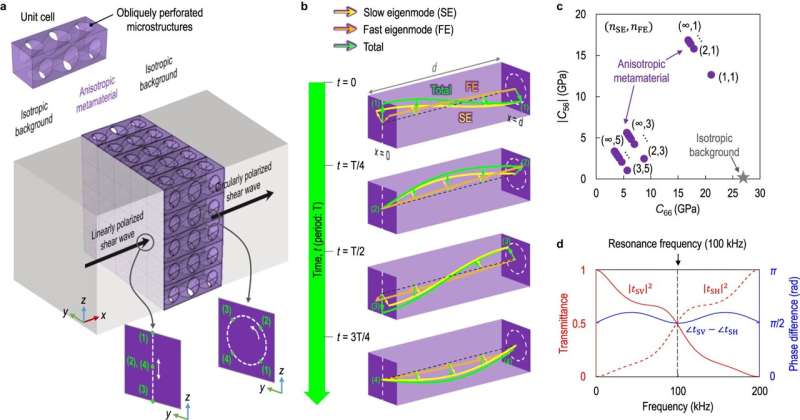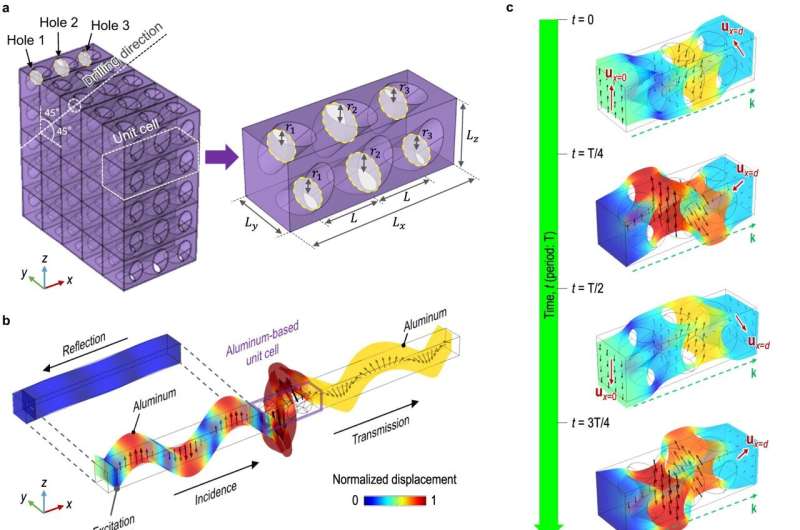This article has been reviewed according to Science X's editorial process and policies. Editors have highlighted the following attributes while ensuring the content's credibility:
fact-checked
trusted source
proofread
Novel metamaterial allows ultrasound detection of hidden structural faults

A high-efficiency circular vibration/polarization ultrasonic conversion technology capable of detecting internal fractures, which can occur in various directions within a structure, has been developed by a joint research team led by Min-woo Kweun of the Korea Institute of Machinery and Materials and Yoon Young Kim of the Seoul National University College of Engineering.
The metamaterial is theoretically capable of completely converting the linear vibration of ultrasonic waves into circular vibration and has a three-dimensional microstructure. The team has announced the outcome of this research in Nature Communications.
The joint research team of the KIMM and SNU first identified the unique anisotropic physical properties of the ultrasonic medium that converts the easily generatable linear vibration mode ultrasonic waves into circular vibration mode ultrasonic waves, which have been more difficult to generate.
Then, they designed a metamaterial to satisfy this feature by arranging a microstructure with three-dimensional cylindrical holes. The team then successfully measured the converted circular vibration mode ultrasound by conducting ultrasonic experiments.
Linear vibration mode ultrasound, which is commonly known as shear ultrasound, is widely used for ultrasonic non-destructive testing to detect weld defects and plate defects. However, in cases where the direction of the defect is parallel to the direction of the linear vibration, the reflectivity of the defect in ultrasonic waves becomes extremely low, making it difficult to detect the returning ultrasonic signal.

The newly developed technology using metamaterials is, in theory, capable of completely converting linear shear ultrasonic waves into circular shear ultrasonic waves. Moreover, as a small number of simplified cylindrical microstructures and low-loss metal materials are used for producing these metamaterials, it is possible to generate circular vibration mode ultrasonic waves with substantially high efficiency.
Senior Researcher Kweun of the KIMM remarked, "We have developed a new ultrasonic mode capable of further improving the defect detection functionality of existing ultrasonic technologies. We will make our utmost efforts so that this new technology can be used in the fields of industrial ultrasonic non-destructive testing and ultrasound imaging in the future."
More information: Jeseung Lee et al, Perfect circular polarization of elastic waves in solid media, Nature Communications (2024). DOI: 10.1038/s41467-024-45146-w




















